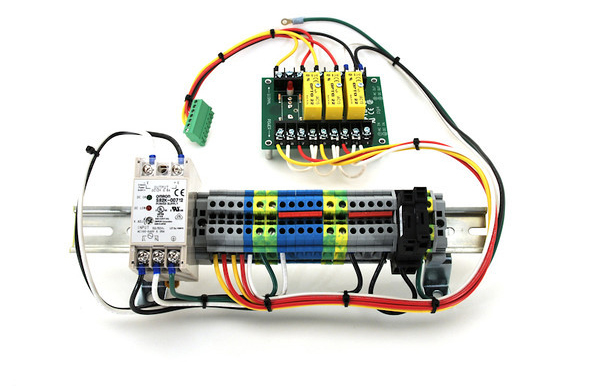WIRE HARNESS ASSEMBLIES
A Wire Harness, also known as a cable harness or wiring assembly, is a grouping of wires, cables, or subassemblies designed to transmit signals or electrical power. A basic Wire Harness may include as few as three discreet components, while the more classic harnesses include many more wires and other passive, and potentially active, components.
A Wire Harness is often confused with a cable assembly; the main difference between the two is that a cable assembly usually has just two ends while a wire harness has multiple branches/ends running off in many different directions with multiple terminations on each branch.
The typical wire harnesses that Epec Engineered Technologies supplies include dozens of wires and sometimes hundreds of different components and terminations. Our engineering staff is well versed in the design and construction of wire harnesses and is available to assist in the development of the most efficient harness to meet your demands.

Wire Harness Design
A wire harness is typically designed to simplify the manufacture of a larger component, and is designed based on the geometric and electrical requirements of the equipment it is to be installed in.
Wire harnesses are commonly used in the electronics industry, the automotive industry, in the manufacture of construction machinery and industrial equipment, as well as in the manufacture of white goods such as washing machines and dryers, refrigerators, and other household appliances.
The wire harness simplifies the building of these larger components by integrating the wiring into a single unit, or several units, for “drop-in” installation. By binding the many wires, cables, and subassemblies into a harness, the OEM or installer only has one component to install. In addition, a wire harness allows the completed assembly to be better secured against the effects of abrasion and vibration, and by constricting the wires into a non-flexing bundle, usage of space is optimized.
Once a design is established, the process of building a wire harness starts with the development of a schematic that is used to create the manufacturing paperwork and the assembly board for the harness. The assembly board, or pin board, is a full size diagram of the harness and shows all of the components and their location and also serves as the workbench for the harness. The wires needed for the harness are supplied on a master reel and are cut to the desired length and identified with printing or labeling if necessary. Once cut to the proper length, the wires are stripped to expose the uninsulated conductor and then fitted with any required terminals or connector housings. These wires and components then are put on the pin board and are bound together by any necessary straps, cable ties, cable lacing, sleeves, tapes, weaves of extruded string, or any combination of these.
In spite of the desire to increase automation, wire harnesses, in general, continue to be manufactured by hand because of the many different processes involved.
Wire Harness Assembly Process
These processes include but are not limited to the following:
- Installing the wires and/or subassemblies on the assembly board.
- Routing wires and/or subassemblies through any required sleeves.
- Applying wraps, ties, or tapes, particularly on any branch-outs.
- Crimping terminals onto wires, especially if more than one wire goes into one terminal.
It is difficult to automate the processes used in the building of a wire harness. Manual production remains more cost effective than automation, especially with small batch sizes. Pre-production or kitting of a harness can be somewhat automated.
This would impact the following steps:
- Cutting and identifying individual wires (cutting/stripping machine).
- Crimping terminals onto one or both sides of the wire.
- Partial plugging of wires prefitted with terminals into connector housings.
- Soldering of wire ends (solder machine).
- Twisting wires.
See our blog post on why complex wire harnesses cannot be fully automated for more information.
Wire Harness Testing
Testing the electrical functionality of a wire or cable harness can be done with the aid of a test board. The test board is pre-programmed with the required electrical characteristics, and the completed harness can be plugged into the test board and tested individually or in multiple numbers.
Comments
Post a Comment
If you have any doutch please let me know